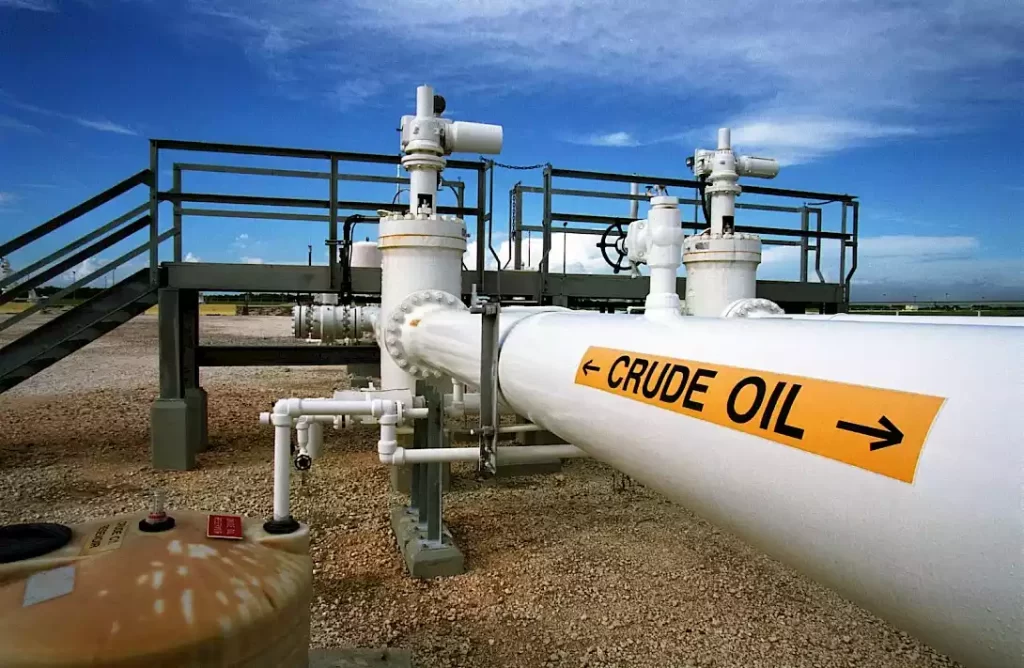Base Oil and Crude Oil
Base Oil and Crude Oil are fundamental to a vast array of products and industrial processes, yet they serve distinct roles. This depth content is designed to delineate the differences between the two, shedding light on their characteristics, origins, applications, and more.
What is Base Oil?
Base oil, often termed as lubricant base oil, is the main component used in the formulation of lubricants. It’s derived from the refining of crude oil. Undergoing extensive processes, base oil has impurities removed to achieve the desired lubricating properties.

Such refining ensures the removal of undesirables like sulfur, waxes, and unstable hydrocarbons. The result is a product with enhanced viscosity, a higher flash point, and optimal lubricating capabilities. Base oils are classified into various groups (from Group I to Group V) based on their production method and inherent properties.
With advancements in technology, there are now both mineral-based and synthetic base oils. While the primary use of base oil is in lubrication, its specific type and grade determine its suitability for various applications, from automotive engine oils to industrial lubricants.
What is Crude Oil?
Crude oil, colloquially known as “crude,” is an unrefined natural liquid composed mainly of hydrocarbons. Found beneath the Earth’s surface in reservoirs, it’s the result of the decay and compression of ancient organic materials over millions of years.
Crude oil’s composition and properties vary depending on its geographical origin. Ranging from viscous black tar to light yellow liquids, crude oil is a crucial feedstock for the petrochemical industry.

Through the refining process, this raw material is transformed into a multitude of products, including gasoline, diesel, jet fuel, and many more. Beyond fuels, refined products of crude oil serve as the base for plastics, chemicals, and countless everyday products.
Given its widespread utility, crude oil has immense economic significance globally, often influencing geopolitical strategies and economies of nations.
Composition and Origin
The composition of both base oil and crude oil revolves around hydrocarbons. They differ in their specifics. Base oil is primarily composed of long-chain hydrocarbons, which have been refined to remove impurities like sulfur, nitrogen, and heavy metals.
In contrast, crude oil is a more complex mixture. It contains various types of hydrocarbons paraffins, aromatics, naphthenes, and asphaltenes, to name a few. Its exact composition can vary widely based on its geographical source.
The origin of crude oil is geological. It’s formed from the remains of ancient marine microorganisms subjected to heat and pressure over millions of years. Different regions produce crude with varying densities, sulfur content, and other characteristics, which further categorizes them into types like sweet, sour, light, or heavy.
Characteristics and Properties:
Base Oil:
- Clarity: Often exhibits a clear to pale yellow hue, suggesting its refined nature.
- Consistency: Exhibits a balanced viscosity optimal for lubrication.
- Purity: Processed to remove most impurities, resulting in a pure product.
- Stability: Displays high thermal stability and a consistent lubricating property.
Crude Oil:
- Variability: Can range from light gold to a dark black color, showcasing its diverse origins.
- Texture: Can be thin and fluid or thick and viscous, emphasizing its raw and unrefined state.
- Composition: A mix of various hydrocarbons, making it complex and diverse.
- Rawness: Retains natural impurities, giving it unique properties based on its geographical source.
Types and Grades
- Base Oil:
- Group I: Less refined, typically used in industries. High in sulfur.
- Group II: Better refined, clearer oils with longer life. Common in many modern lubricants.
- Group III: Highly refined, mainly through hydrocracking. Often termed ‘synthetic’ in the US.
- Group IV: True synthetics, polyalphaolefins (PAOs).
- Group V: All other base oils not covered by previous groups, like esters, polyglycols, and silicone.
- Crude Oil:
- Sweet vs. Sour: Refers to sulfur content; sweet has less sulfur, sour has more.
- Light vs. Heavy: Refers to density and viscosity; light is less dense and flows easily, heavy is the opposite.
- API Gravity: Scale to measure the density of liquid petroleum products.
What are the uses of Base Oil and Crude Oil
Base Oil Uses:
- Lubricants: Base oil is the primary component in the formulation of engine oils, hydraulic fluids, gear oils, and greases.
- Metalworking Fluids: Used in processes like cutting, grinding, and forming to reduce wear and heat.
- Transformer Oils: Employed in electrical transformers for cooling and insulation.
- Process Oils: Utilized in the manufacture of various products like rubber, chemicals, and textiles to aid in processing and to enhance product characteristics.
- White Oils: Used in cosmetics, pharmaceuticals, and certain food-grade applications due to their high purity.
Crude Oil Uses:
- Fuel Production: Crude oil is refined to produce gasoline, diesel, jet fuel, and other petroleum-based fuels.
- Petrochemicals: Used to produce chemicals like ethylene and propylene, which are building blocks for plastics, resins, and synthetic fibers.
- Asphalt: Crude oil is the source of asphalt used in road construction and roofing.
- Lubricants: Some fractions of crude oil are used to produce lubricating oils and greases.
- Bitumen: Employed in waterproofing and sealing, especially in roofing and road surfaces.
- Other Products: Crude oil derivatives find their way into countless products, from solvents, rubber, and pesticides to cosmetics and even certain food additives.
Environmental Impact
Base Oil:
- Waste: Used base oil can be a significant environmental hazard if not disposed of or recycled correctly.
- Production: Manufacturing and refining processes can result in emissions and energy consumption.
Crude Oil:
- Extraction: Oil drilling can disrupt local ecosystems and landscapes.
- Spills: Accidental releases can have catastrophic effects on marine and coastal environments.
- Emissions: Burning crude oil releases greenhouse gases contributing to global warming.
- Water Use: Significant amounts of water are used and potentially contaminated in extraction processes.
Economic Significance
Crude oil acts as the cornerstone of global economies. Nations rise and wane, wars are fought, and geopolitics shift in its wake. Its price fluctuations can cascade through industries, impacting everything from travel costs to household expenses.
On the other hand, base oil, as the backbone of the lubricant industry, indirectly powers vast sectors, from automotive to industrial. The economic dance of these oils is intricate and pivotal, affecting both global scenarios and individual lives.
Future Trends and Sustainability
- Green Transition: Shift towards renewable energy sources, reducing dependence on crude oil.
- Bio-based Oils: Emergence and increasing use of oils derived from renewable biological sources.
- Recycling: Enhanced techniques for recycling used oils to reduce environmental impact.
- Alternative Fuels: Exploration and adoption of alternatives to crude oil, such as hydrogen and electricity.
- Efficiency: Advances in technology to extract and refine oils more efficiently, reducing waste and environmental harm.
- Regulation: Increased global regulations aiming for reduced carbon footprints and environmental protection.
Difference Between Base Oil and Crude Oil
Here’s a comparison chart highlighting the key differences between base oil and crude oil:
| Aspect | Base Oil | Crude Oil |
|---|---|---|
| Definition | Refined, purified hydrocarbons with specific properties | A mixture of hydrocarbons and impurities |
| Source and Origin | Derived from crude oil through refining | Extracted from natural reservoirs |
| Refining Process | Undergoes further processing for purification | Requires extensive refining |
| Impurities | Low impurity content | Contains various impurities (e.g., sulfur, metals) |
| Physical Properties | Consistent properties (viscosity, lubricity) | Variable properties depending on the source |
| Applications | Primarily used in lubricants and industrial applications | Used as a feedstock for various industries |
| Environmental Impact | Generally has a lower environmental impact due to refining | Extraction and refining processes can have a significant environmental impact |
| Sustainability | Ongoing efforts to improve sustainability in production | Increasing focus on sustainable alternatives and practices |
| Importance in Lubrication | Plays a crucial role in lubricant performance | Not directly used in lubrication, but forms the basis for lubricant production |
What are the similarities between Base Oil and Crude Oil?
- De new methylation, as well as maintenance methylation, can be described as both cellular processes.
- Furthermore, they are involved in the DNA replication process.
- Both are essential elements of the DNA process of methylation.
- The processes are made up of various catalysts.
- Each de novo maintenance methylation as well as de novo are crucial irreplaceable processes that occur in DNA replication.
Summary
Base oil and crude oil, while intrinsically linked, serve distinct roles in our world. Base oil, refined and consistent, plays its silent but crucial part in lubrication. Crude oil, raw and diverse, fuels not just vehicles but modern civilization itself.
Their environmental footprints urge reflection and responsibility. Economically, they weave a complex web, influencing global strategies and everyday living. As the winds of change blow, ushering in greener technologies and sustainable practices, the narrative of these oils is set to evolve, signaling hope for a balanced future.

